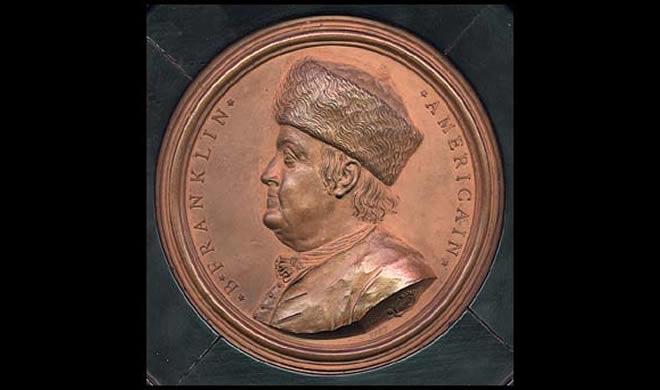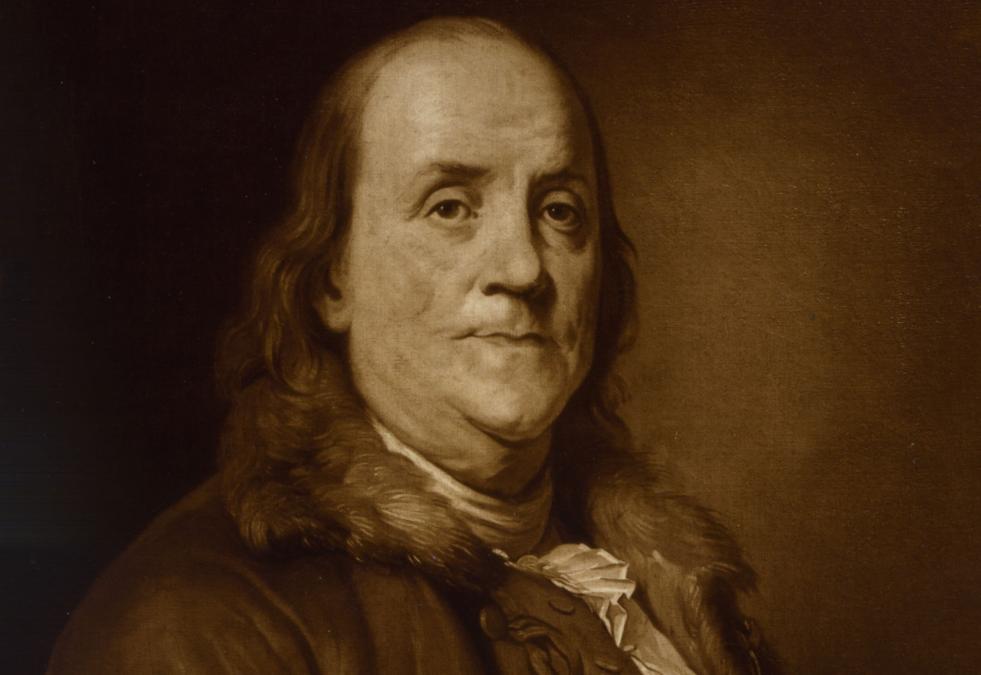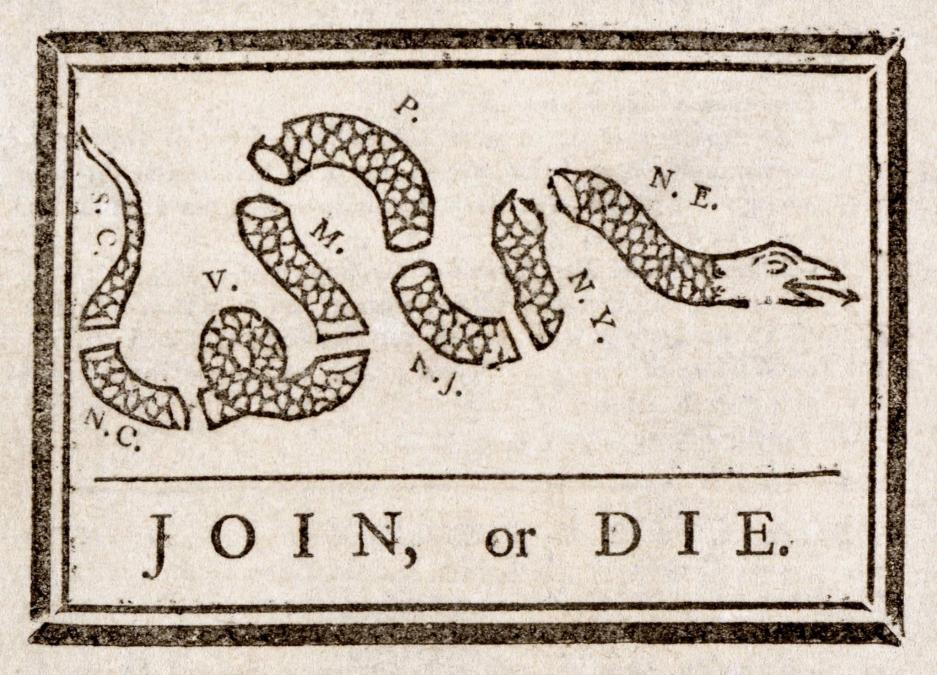
For centuries, medals have been used to commemorate important events and to recognize and reward individual accomplishment and achievement.
Serving as visual reminders of great events and people, these not so distant cousins to coins offer exceptional examples of the material culture of ceremony, celebration, and the public recognition of genius and creativity. By the 18th century, France had become the acknowledged leader of this practice of "sculpture in miniature." In fact, many of the dies for early American medals...were actually cast in France.*
Such was the case with the first and most popular of all the French reflections of Benjamin Franklin: the Nini medallion of "B. FRANKLIN, AMERICAIN.," created by Jean Baptiste Nini, an Italian sculptor working in Paris. Jacques Donatien Le Ray de Chaumont, a well-known businessman who held various official posts in Chaumont, France, was a friend of Franklin's and had given him the use of his chateau there. Nini had previously commissioned a medallion of Chaumont in 1771, and Chaumont now sent Nini a profile drawing of Franklin that had been given to him.
The history of the Nini medallions originates in pro-American, Parisian society. Chaumont was occupied with contracting for supplies, shipping gunpowder and other things to America. Many other business dealings between Paris and major seaports were occurring as well. Some of the people Franklin surrounded himself with were Dr. Bancroft, a physician and naturalist (also Franklin's secretary in Paris), Jonathan Williams, William Alexander, and English banker Thomas Walpole and his 22-year-old son. On December 11, 1777, Franklin sent a letter to Thomas Walpole, saying, "From a sketch Dr. B[ancroft] had which was drawn by your ingenious and valuable Son, they have made Medallions in terre-cuit." This letter acknowledged that a drawing of Franklin done by the younger Walpole had been sent to the Chaumont factory to make the famous terra cotta medallion.
Chaumont and Franklin's other acquaintances not only saw him as a personal friend, but as a key figure in their success as businessmen. They had to establish him as a symbol in order to sell him to the general public. The intention of the first Nini medallion was to present a popular figure in a simple, popular way. The Franklin medallions appear in five types, believed to be made from drawings sent to Nini from Paris, rather than drawings done of his own hand. Anne Vallayer, Sevres, and Wedgwood were among those who produced drawings for later medallions.
Nini added a fur cap to his first medallion, either because they were the rage at the time or because his employer told him to add one. Nini added Rousseau's cap, which he copied from an engraving, as Allan Ramsay had painted it in 1766. He sent this to Paris for approval, along with some other suggestions that included a liberty cap, a face with spectacles, and a face without spectacles (these last three were rejected). The original cap, or "bonnet de peau," was accepted and had far deeper symbolism for the French, even if it was not precisely true to what Franklin had been wearing at the time the drawing was done.
Several anecdotes suggest that the Franklin medallions became quite a sensation. They even appeared on sale in the Sevres porcelain exhibit at Versailles, under the very eyes of the king.
Franklin certainly was an individual worthy of the Nini medallions, appropriately celebrated for his genius and creativity, accomplishment and achievement. On June 3, 1779, Franklin sent a letter from France to his daughter in Philadelphia, recognizing the privilege of such an honor. It reads:
"The clay medallion you say you gave to Mr. Hopkinson was the first of the kind made in France. A variety of others have been made since of different sizes; some to be set in the lids of snuffboxes, and some so small as to be worn in rings; and the numbers sold are incredible. These, with the pictures, busts, and prints, (of which copies upon copies are spread everywhere,) have made your father's face as well known as that of the moon, so that he durst not do anything that would oblige him to run away, as his phiz would discover him wherever he should venture to show it. It is said by learned etymologists, that the name doll, for the images children play with, is derived from the word IDOL. From the number of dolls now made of him, he may be truly said, in that sense, to be i-doll-ized in this country."
*TFI News, John Alviti, January 1995.
Note: The object pictured above is part of The Franklin Institute's protected collection of objects. The image is © The Franklin Institute. All rights are reserved.
Always quick with a bon mot, Benjamin Franklin has been quoted and paraphrased endlessly. The problem? He didn’t say everything that’s been attributed to him.
On May 9, 1754, Benjamin Franklin published the political cartoon “Join, or Die” in the Pennsylvania Gazette, a Philadelphia-based newspaper that he owned. The cartoon has become a symbol of American unity, but was originally a rallying cry for supporting the British.



